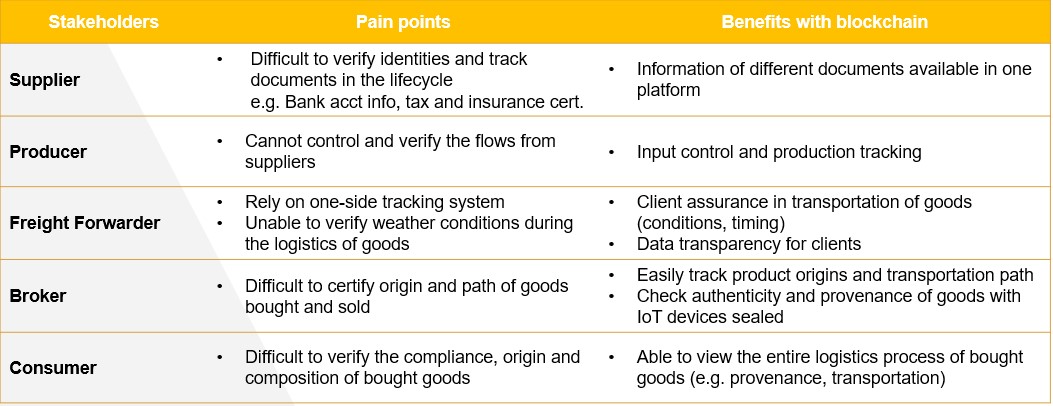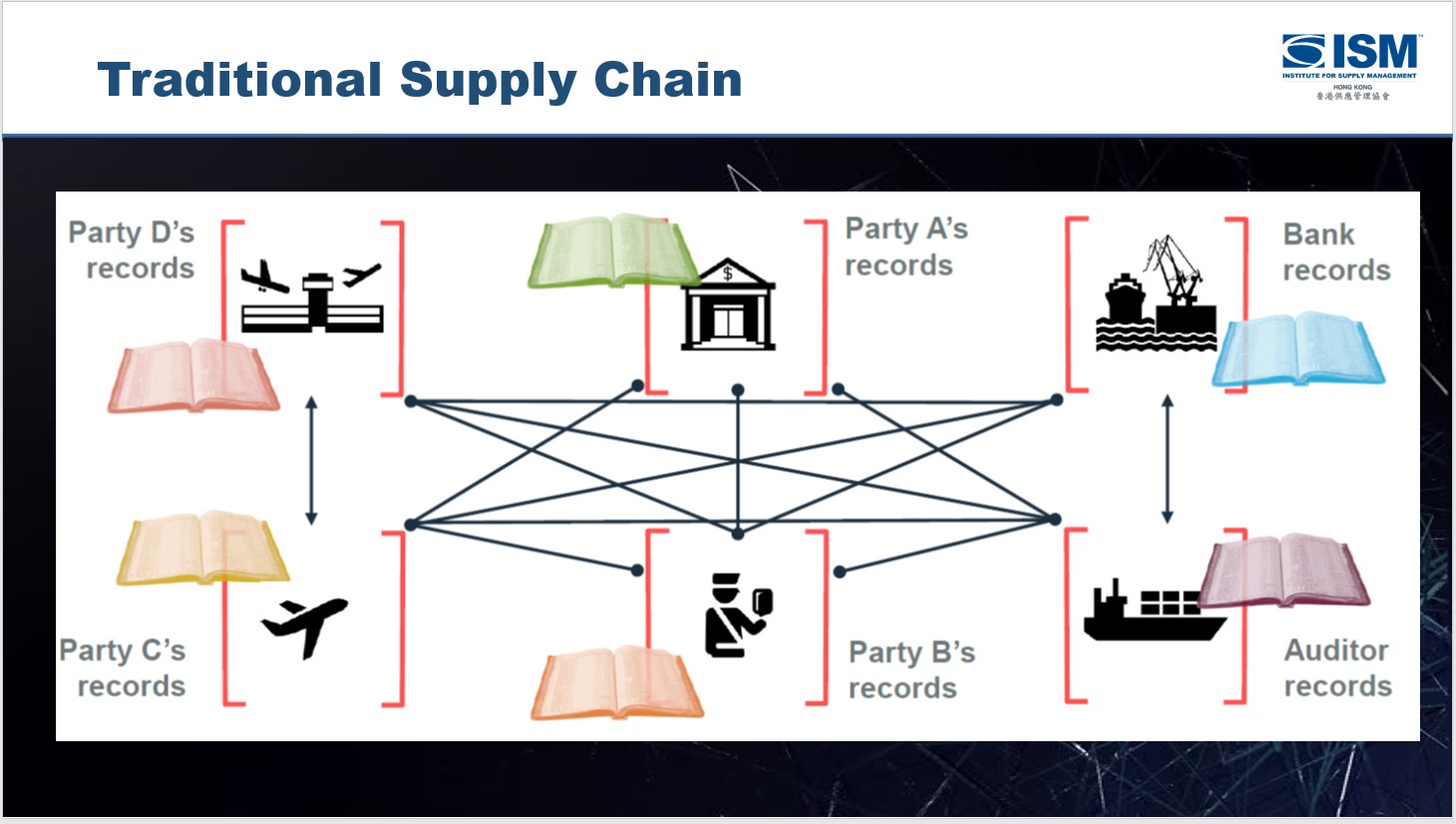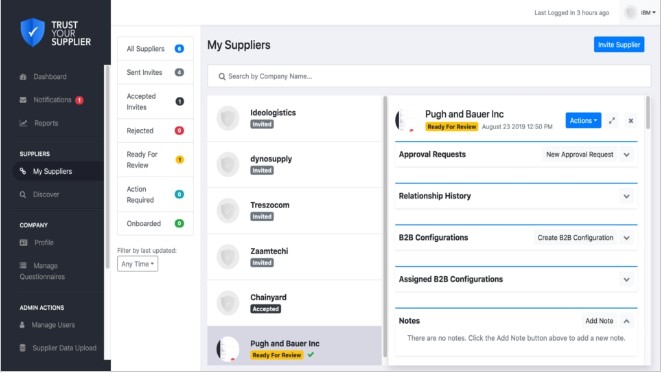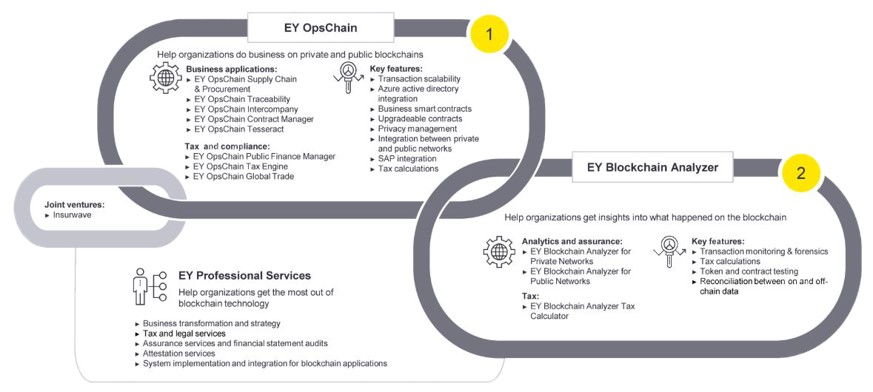IBM, Cisco and EY: The 3 Blockchain Leaders in Supply Chain in 2020
Lucas Cacioli Jan 15, 2020 16:00
Supply chains are vital networks between a company, its vendors and suppliers to produce and distribute specific products to the consumer. This network usually includes many actors doing different activities—people, entities, information, and resources.


Supply chains are vital networks between a company, its vendors and suppliers to produce and distribute specific products to the consumer. This network usually includes many actors doing different activities—people, entities, information, and resources.
Supply chains are developed by companies so they can reduce their costs and remain competitive in the business landscape. In this respect, supply chain management is crucial because an optimized chain will lower a company’s costs and expedite its production cycle.
Supply chains functioning optimally should be a concern of the consumer as well. To name a few examples, according to Cisco and GEODIS Supply Chain Worldwide Survey, World Health Organization in 2017 over 30 billion dollars of counterfeit pharmaceuticals were sold to consumers and every year 420,000 people die from contaminated food. Cisco’s research also revealed that almost 9 out of 10 companies have reported that they have limited visibility of their supply chain.
Blockchain Solutions
Blockchain features make it the perfect solution to supply chain management. At its most basic level, blockchain is literally just a chain of blocks. The blocks are the information stored and the chain is the shared database.
Blockchains are basically a new composite of three older technologies—private key cryptography, distribute ledger technology (DLT) and a consensus protocol to service the network’s transaction, record-keeping, and security. The consensus protocol will dictate how the nodes are incentivized to maintain the network, an immediate example are the miners of Bitcoin’s proof-of-work consensus protocol. Miners spend computational power that supports the blockchain and are rewarded with Bitcoin.
Integrating blockchain into a supply chain will yield useful optimizations. Information sharing serves as an essential approach for the survival of enterprises and enabler of supply chain integration. Using DLT, the records are immutable and cannot be changed without a majority consensus of the nodes on the chain. The ledger of the whole chain is decentralized and replicated among the network, meaning there is no single point of failure and no one party can govern or validate the blockchain. Within the chain exist stored procedures, more commonly referred to as smart contracts. These smart contracts are governed by algorithms and will automatically execute to enforce validation of the rules for data and transactions.
Looking at two visual representations of supply chains both with and without a blockchain, the benefits become obvious. While the traditional supply chain relies on the actors to update and maintain their ledgers and ultimately try to reconcile them between each other, the blockchain supply chain automates this labour and instantly updates the decentralized ledgers of all parties.


Precisely, blockchain benefits in a supply chain are the following four factors:
1. Time Saved—transactions are reconciled almost instantaneously when compared to the days of verification required through traditional methods.
2. Lower Costs—the removal of financial intermediaries through the peer-to-peer network.
3. Reduced Risk—the decentralized and shared ledger with its protocols acts as an almost impenetrable deterrent to tampering of information, fraud and cybercrime.
4. Increased Trust—all information and processes are shared and authorized by the network, records are immediately reconciled.
Blockchain in Supply Chain Use Cases
While the philosophy of blockchain’s application to the supply chain is fun to discuss, over the last few years giants of industry have been launching and creating real-life use cases that are revolutionizing the industry as advertised. According to Allied Market Research, 2018, “The global blockchain supply chain market size was valued at $93.16 million in 2017, and is projected to reach $9,852.91 million by 2025, growing at a CAGR of 80.2% from 2018 to 2025.”
Below we take a brief look at two IBM initiatives—TradeLens and Trust Your Supplier as well as highlight a few of the use cases that are leveraging EY’s Ops Chain and Cisco's emphasis on blockchain interoperability.
IBM’s TradeLens
In August 2018, IBM and Maersk announced a blockchain-based shipping solution called TradeLens. The aim of TradeLens is to increase global trade by 15%, which is the magic figure that the World Economic Forum has highlighted as an enabler to boost economies and employment globally, by removing barriers in international supply chain.
Combining Maersk’s expertise and global network, IBM’s blockchain platform for transparent logistic with a reconciled audit trail—TradeLens creates interoperability which coordinates the actors along the shipping supply chain—port and terminal authorities, customs officers, cargo owners, freight forwarders, third party logistics and inland transportation.
Since its inception, over 100 organizations have joined the TradeLens ecosystem who combined register more than 10 million weekly shipping events. Data from 55 ports and terminals is fed back into TradeLens to be utilized for further identifying previously unforeseen logistical concerns or areas of improvement.
IBM—Trust Your Supplier
In August 2019, IBM and Chainyard announced Trust Your Supplier, a blockchain network that simplifies and accelerates Supplier Onboarding and Lifecycle Management. TYS allows users to identify, verify, and maintain supplier information in a secure, decentralized network. Anheuser-Busch InBev, Cisco, GlaxoSmithKline, Lenovo, Nokia, Schneider Electric and Vodafone are founding participants alongside IBM in the network and share a common goal of solving challenges related to supplier information management.
TYS ultimately creates a unique digital passport to identify suppliers on the blockchain network and allows them to share information with any permissioned buyer on the network. Integrating blockchain into the network allows for secure and permissioned data sharing.
Benefits for Buyers: TYS minimizes supplier risk and ensures compliance while maintaining an accessible and permanent record of supplier claims which, as a result, vastly enhances compliance and expedite audits.
Benefits for Suppliers: The Single global identity or supplier passport is accessible to everyone which reduces transaction times and improves discovery for buyers on the network.

Image: IBM TYS Dashboard
The Trust Your Supplier blockchain network can also connect existing procurement business networks by relaying necessary supplier data required for exchanging Purchase Orders and invoices, without the need for suppliers to enter it in multiple different networks and automating onboarding process to those networks. The IBM Supply Chain Business Network can connect to Trust Your Supplier using open industry programming interfaces for access to existing verified supplier information.
EY Ops Chain
The EY Ops Chain debuted in April 2017 and is Ernst & Young’s flagship solution for the industrialization of blockchain technology for enterprise users. EY Ops Chain was designed for companies to set up and manage networks of business partners to then run shared processes across entire ecosystems including—procurement, inventory, logistics, invoicing and account management.

Source: Ernst & Young
Following the launch of the EY Ops Chain’s second-generation upgrade in April 2019, the enterprise blockchain saw larger adoption in 2H 2019.
In June 2019, Bofrost Italia began leveraging the EY Ops Chain platform to implement its traceability application for its frozen food supply. QR codes on packaging now provides details to consumers from harvest to point of sale.
In November 2019, Singaporean based Blockchain Wine Pte. Ltd. went live with its TATTOO Wine marketplace for customers throughout the Asia Pacific. According to Tim Tse, Founder and Chairman, BlockchainWine Pte. Ltd said, “Every bottle is now traceable from the point to origin all the way through to direct delivery, and on to the consumer. TATTOO helps reduce layers of distribution and helps address issues of counterfeit wines, optimizes supply chains, facilitates trade and empowers both wineries and consumers.”
In our recent interview with Jimmy Ong, Asia Pacific Blockchain Lead at EY, he further shared, “We worked with the Canadian Blood Service (CBS) to track blood from 'vein to vein.’ The results were improved transparency and donor engagement, enhanced end-to-end management along with the key process steps from the collection, CBS transport, production/testing, storage, hospital transport, and storage.”
CISCO Blockchain: Interoperability in 2020
When CISCO launched its blockchain in 2019, the emphasis for the platform was on its interoperability—the ability to share information across different blockchain networks, without restrictions.
CISCO’s vision was for digitalized assets or proofs from one blockchain network to be able to be transferred to another while maintaining a cryptographically secure record of ownership and custody.
Source: Blockchain by Cisco-Build trust-based business networks for digital transformation
According to the whitepaper, since its inception and application to the supply chain, CISCO has recorded benefits such as a 35% increase in productivity; a capital expense savings of 40% and a 5-10% increase in delivery commitments.
CISCO’s research indicates that blockchain networks performing interoperability in the global supply chain will continue to unlock over $3.1 trillion in business by 2030 as well as the estimated 10% of global GDP stored in blockchain by 2027.
Image via ShutterstockImage source: Shutterstock

.jpg)

